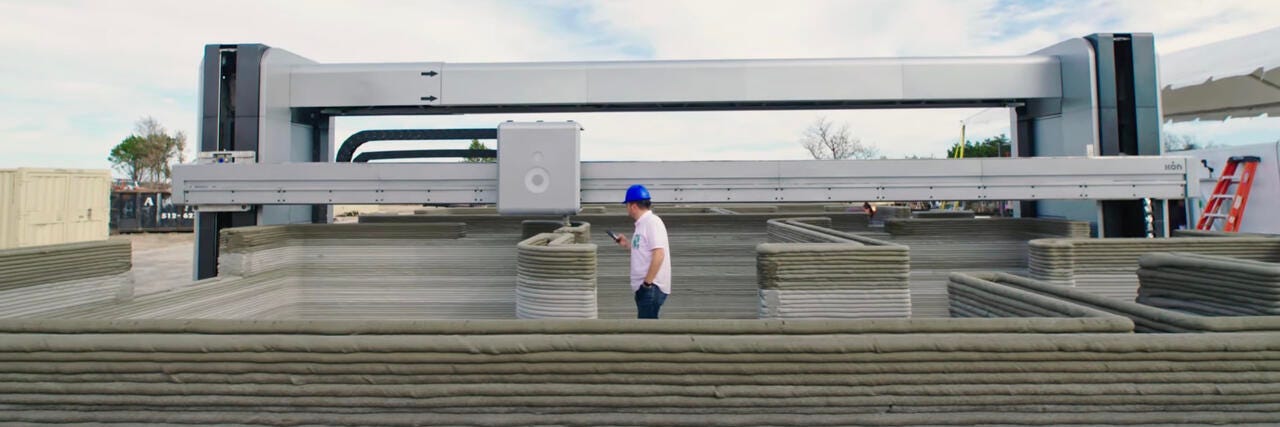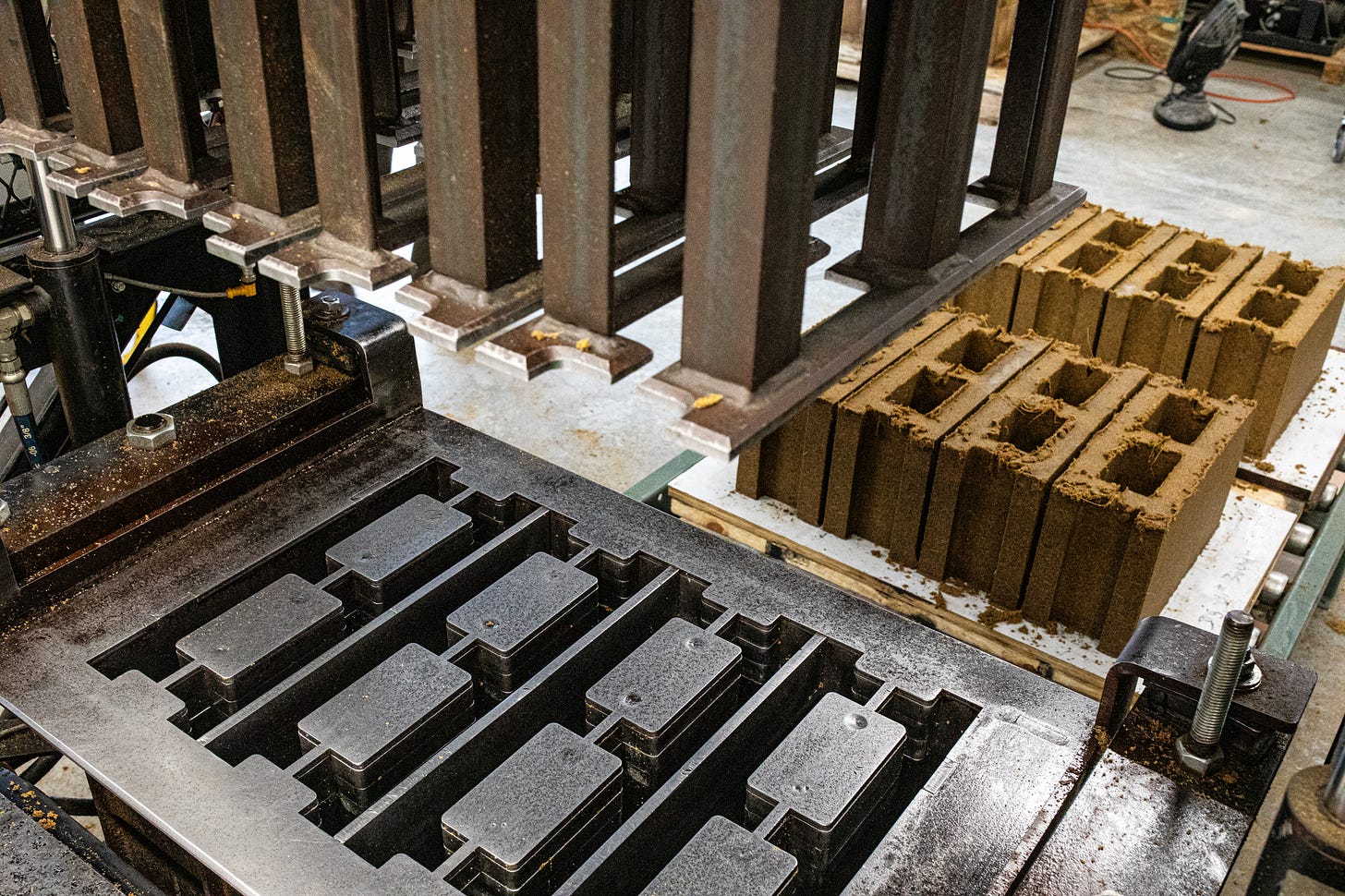Who’s Making Housing Affordable in America?
Mapping out some of the most interesting U.S. innovators shaping the next phase of housing.
A complex web of causes have all come together to drive down housing affordability in this country. Most of the attention in the media and on platforms like Substack is focused on political and cultural factors such as NIMBYism or the environmental permitting process. However, facts like a shortage of skilled labor or the rising cost of construction materials are also crucial. So, too, is the impact of higher-for-longer mortgage rates – the “rate-lock effect” – on the supply of existing homes for sale.
With this in mind we wanted today to focus a little on the US companies that are unleashing private market dynamism to try and make housing more affordable and accessible for everyone.
Specifically, we’ve mapped some of the most interesting U.S. innovators shaping the next phase of housing – from materials and labor to permitting and finance.
Before we continue, if you want to “get smart” on the housing affordability crisis, you must subscribe to Boyd Institute, where we explore issues from all angles in search of bold, asymmetric solutions.
3D Printing:
ICON is developing 3D-printed homes at scale. An Austin-based startup, ICON uses giant robotic printers and advanced materials to “print” full-size houses layer by layer. In 2024, ICON finished the world’s largest 3D-printed housing development – 100 homes in Georgetown, Texas – touting faster build times, lower cost, fewer workers, and less waste than traditional construction.
In 2022, they were awarded a $57.2m contract by NASA to develop an autonomous system designed to build landing pads and habitats on the Moon, using Lunar resources.
Another firm using 3D printers to build homes is the Florida-based Apis Cor, which just recently completed the world’s largest 3-D-printed office building in Dubai and a commercial facility in Texas.
Robots:
Other companies are trying to automate individual steps in the home construction process.
Renovate Robotics, for example, has developed Rufus, an autonomous system designed to install asphalt shingles on residential roofs.
Or Canvas, whose drywall finishing robot reduces the usual five-to-seven-day process of applying and sanding joints down to about two days.
As net migration levels continue to remain low for the foreseeable future and the construction industry continues to be plagued by shortages of skilled labor, automation will become a more and more important part of keeping housing affordable for consumers.
Prefab and Modular Housing:
Boxabl mass-produces modular homes that fold for transport, significantly reducing shipping and installation costs. Their flagship product, the Casita, is a 361-sq-ft studio with a full kitchen and bathroom.
By manufacturing homes on an assembly line and shipping them like appliances, Boxabl is able to keep costs relatively very low. Their cheapest unit – the Baby Box – comes in at only $20,000 after discounts.
Boxabl is only one firm in an ecosystem of prefab companies. Take Cover Technologies, for example, a Los Angeles-based startup that manufactures and installs accessory dwelling units (ADUs) and small homes in as little as 6–7 months, much faster than a traditional one-off construction project. Or Pallet Shelter, a public benefit company which builds modular shelters for disaster response, homeless shelters, and transitional housing.
AI and Software for Permitting and Design:
Gradually AI is beginning to transform the permitting process. Companies like PermitFlow are trying to build, as TechCrunch put it, a “TurboTax for construction permitting.” Their product is capable of handling research, application preparation, submission, monitoring, and permit issuance across thousands of U.S. municipalities.
Another company to keep your eyes on is UpCodes, which hosts a digital library of more than five million sections of U.S. building codes, allowing it to summarize requirements and perform calculations for architects and contractors at substantially reduced costs.
In addition to permitting, startups are also bringing innovation to other planning aspects of a construction site. Take Spacial AI which automates the production of mechanical, electrical, and plumbing plans, or Genia, which generates structural layouts for architects.
Materials:
Innovation is also happening with the materials used to build homes. Adept Materials has developed a leaf-inspired wall system which uses thick silica panels to regulate moisture and heat more effectively than the standard combination of drywall and insulation.
Another company innovating in this space is Colorado-based Prometheus Materials, which grows microalgae in tanks with artificial sunlight and seawater, then dries and blends the biomass with natural binders to create a bio-cement. After being pressed, their blocks slot into traditional masonry practices while also significantly cutting emissions.
Financial Services:
While a large proportion of American mortgage holders are locked into pandemic-era rates, few will voluntarily sell and refinance. That reduces inventory and pushes prices higher. Some companies, such as RetroRate and Roam, are trying to work around this constraint by connecting buyers and sellers for homes with assumable mortgages. An assumable mortgage lets a buyer take over the seller’s low-rate loan and avoid current rates.
Closing:
Housing affordability will not be solved by a single breakthrough or policy fix. It will require a steady accumulation of innovations and reforms across every part of the process, from design and permitting to materials, labor, and construction itself. In order for this to work, it will require combining state power with market dynamism. The companies highlighted here show what the private sector side of that looks like in practice. While their specific goals vary enormously, together they represent an attempt to bring asymmetric solutions to this issue, and that should be celebrated.
Are there any companies or industries we missed? Let us know!







I'd offer FrameTec as worth a look.
https://frametec.com/about-us
You mention Boxabl and Cover but there are scores of other manufactured home companies whose market size will increase dramatically when Congress authorizes HUD to remove the chassis requirement from their design.
That small de-regulation will make it easier for manufactured homes to be installed in suburban neighborhoods w/ site-built homes, and even for them to be multi-floor. It'll also change the financing requirements so you can get a mortgage for them instead of an RV loan (which has much higher rates).
Of all the tech you mention, manufactured homes will have the biggest impact on cost. But they aren't really "new" — they've been around for decades. It's just a question of the regulatory barriers to their widespread adoption.
For folks who want to learn more about the MH industry, I recommend MH Insider magazine. Also several good market reports for purchase out there e.g. https://www.mordorintelligence.com/industry-reports/manufactured-homes-market